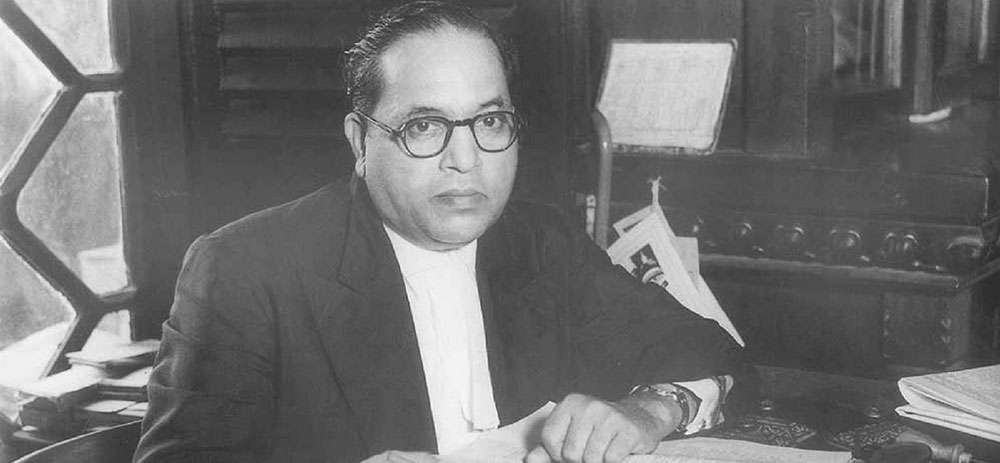Dr. Bhimrao Ramji Ambedkar, popularly known as Babasaheb Ambedkar, was a towering figure in Indian history. A social reformer, economist, jurist, and the chief architect of the Indian Constitution, Dr. Ambedkar dedicated his life to eradicating discrimination and promoting social justice. His contributions laid the foundation for a more inclusive and equitable India, ensuring that marginalized communities had a voice in governance and society.
Early Life and Education
Dr. Ambedkar was born on April 14, 1891, in Mhow (present-day Madhya Pradesh) into a Dalit family. His early life was marked by severe caste-based discrimination. Despite facing social barriers, he pursued education with remarkable determination. He graduated from Elphinstone College in Bombay (now Mumbai) and later earned multiple degrees, including a doctorate from Columbia University and the London School of Economics. His education equipped him with the intellectual tools to challenge social injustices and advocate for the rights of the oppressed.
Ambedkar’s Fight Against Discrimination
Dr. Ambedkar was deeply moved by the plight of Dalits, also known as the “untouchables,” who faced extreme social exclusion and were denied basic human rights. Throughout his life, he led movements to end untouchability, secure equal rights, and promote social justice.
The Mahad Satyagraha (1927)
One of his first major movements was the Mahad Satyagraha, where he fought for Dalits’ right to access public water sources. This movement challenged the deeply entrenched caste system and asserted the equality of all individuals.
Temple Entry Movements
Dr. Ambedkar also led several temple entry movements, demanding that Dalits be allowed to enter Hindu temples, a right that was historically denied to them. His activism inspired legislative changes that gradually improved the social conditions of Dalits.
The Poona Pact (1932)
In 1932, Dr. Ambedkar played a crucial role in negotiating the Poona Pact with Mahatma Gandhi. While he initially advocated for separate electorates for Dalits, he agreed to a compromise in which Dalits would receive reserved seats in legislatures instead. This agreement ensured better political representation for Dalits within the existing electoral framework.
Architect of the Indian Constitution
After India gained independence, Dr. Ambedkar was appointed as the chairman of the Drafting Committee of the Indian Constitution. His vision for India was one of equality, justice, and dignity for all. Under his leadership, the Constitution of India was framed, incorporating several key provisions aimed at abolishing discrimination and promoting social justice.
Key Contributions to the Constitution
- Abolition of Untouchability
Article 17 of the Indian Constitution explicitly abolishes untouchability, making it illegal and punishable by law. - Fundamental Rights
Dr. Ambedkar emphasized the inclusion of fundamental rights, ensuring that every citizen had equal rights, regardless of caste, gender, or religion. - Reservation System
To uplift marginalized communities, provisions for reservation in education and government jobs were introduced for Scheduled Castes (SC), Scheduled Tribes (ST), and Other Backward Classes (OBC). - Social and Economic Justice
Dr. Ambedkar envisioned a society free from social and economic disparities. His policies and ideas influenced laws that promoted labor rights, gender equality, and welfare programs for the underprivileged.
Beyond Law: A Vision for Social Reform
Dr. Ambedkar believed that social transformation was as important as legal and political reforms. He advocated for the education and empowerment of women, labor rights, and the eradication of caste-based discrimination.
Role in Women’s Rights
He strongly supported women’s education and their right to work, own property, and be treated as equals in society. His contributions led to the Hindu Code Bill, which reformed marriage and inheritance laws, giving women greater rights.
Labor Reforms
As the first Law and Justice Minister of India, Dr. Ambedkar introduced labor laws that improved working conditions, reduced working hours, and ensured fair wages. His efforts helped establish social security measures for workers.
Conversion to Buddhism
In 1956, Dr. Ambedkar, along with millions of his followers, converted to Buddhism in a historic event in Nagpur. He found solace in Buddhism’s teachings of equality and compassion and saw it as a means to escape caste-based discrimination. His conversion played a crucial role in the revival of Buddhism in India and inspired many Dalits to adopt a new identity beyond the constraints of caste.
Legacy and Impact
Dr. Ambedkar passed away on December 6, 1956, but his legacy continues to shape India’s social and political landscape. His contributions laid the foundation for modern India’s democratic and egalitarian ideals.
Ambedkar’s Influence Today
- The reservation system he introduced has provided educational and employment opportunities to millions of Dalits and other marginalized communities.
- His fight against discrimination continues to inspire social justice movements across India and beyond.
- Statues, institutions, and universities are named after him, honoring his contributions.
- His teachings on equality and justice remain relevant in addressing contemporary social issues.
Conclusion
Dr. B.R. Ambedkar was more than just a political leader; he was a visionary reformer, social activist, and intellectual giant who fought against caste discrimination and worked towards building an inclusive society. His contributions to the Indian Constitution and his relentless efforts to uplift the marginalized remain unparalleled. His life’s mission was to ensure “liberty, equality, and fraternity” for all citizens.
As we reflect on his legacy, it is crucial to continue working towards abolishing discrimination and ensuring that the values of justice and equality he championed are upheld in every sphere of society. Dr. Ambedkar’s dream of a just and fair India is not just a historical ideal but a continuing mission for every generation.


